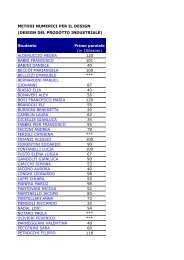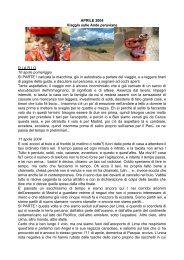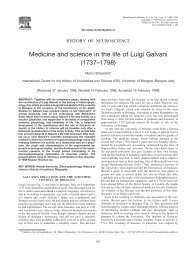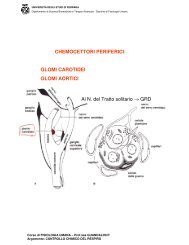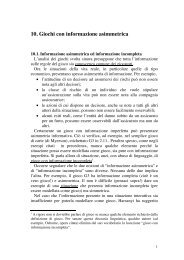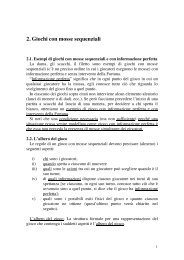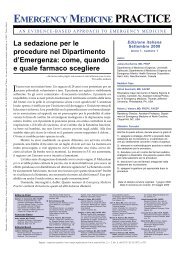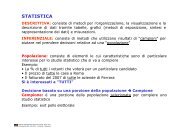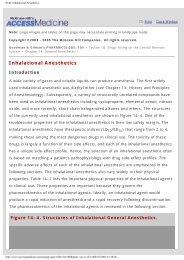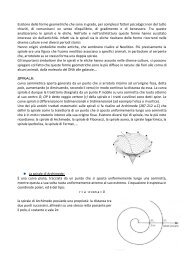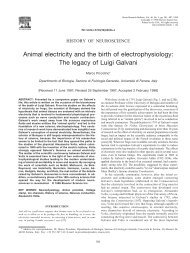Implicit-Explicit Runge-Kutta schemes for hyperbolic systems ... - utenti
Implicit-Explicit Runge-Kutta schemes for hyperbolic systems ... - utenti
Implicit-Explicit Runge-Kutta schemes for hyperbolic systems ... - utenti
Create successful ePaper yourself
Turn your PDF publications into a flip-book with our unique Google optimized e-Paper software.
We can consider the system of ode’s<br />
<strong>Implicit</strong>-<strong>Explicit</strong> <strong>Runge</strong> <strong>Kutta</strong> <strong>schemes</strong><br />
y ′ = f(y) + 1<br />
ε g(y),<br />
where y = y(t) ∈ R N , f, g : R N → R N .<br />
Splitting methods<br />
A simple splitting consists in solving separately the non-stiff problem<br />
y ′ = f(y),<br />
applying an explicit scheme and, using an implicit scheme, the stiff problem<br />
y ′ = 1<br />
ε g(y).<br />
Only first order accurate, but has several advantages:<br />
⊲ Some properties of the solution are maintained (e.g. positivity, strong stability perserving<br />
(SSP) property)<br />
⊲ Consistency with the stiff limit as ε → 0<br />
⊲ In many cases the implicit scheme <strong>for</strong> g can be explicitly solved<br />
Remark Higher order splitting methods (ex. Strang splitting) can be constructed. Tipically<br />
these extensions present a severe loss of accuracy when the g term is stiff.<br />
5



